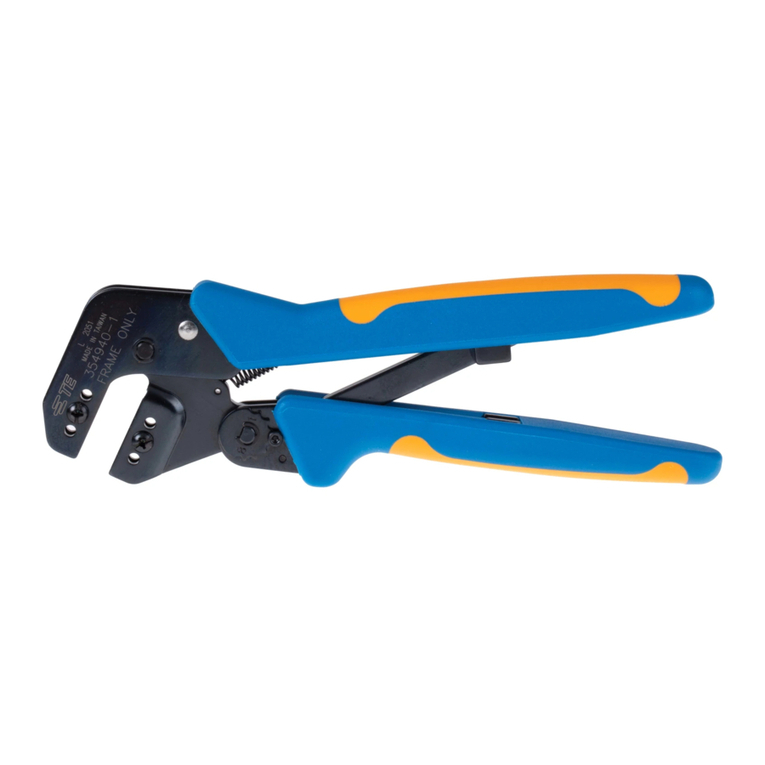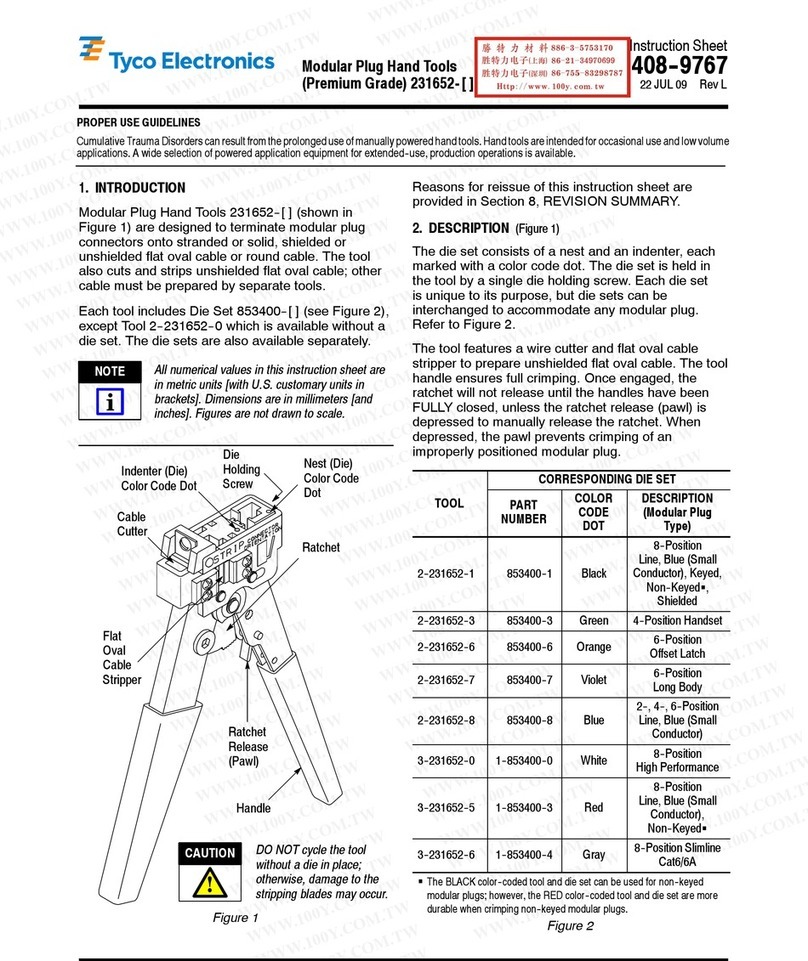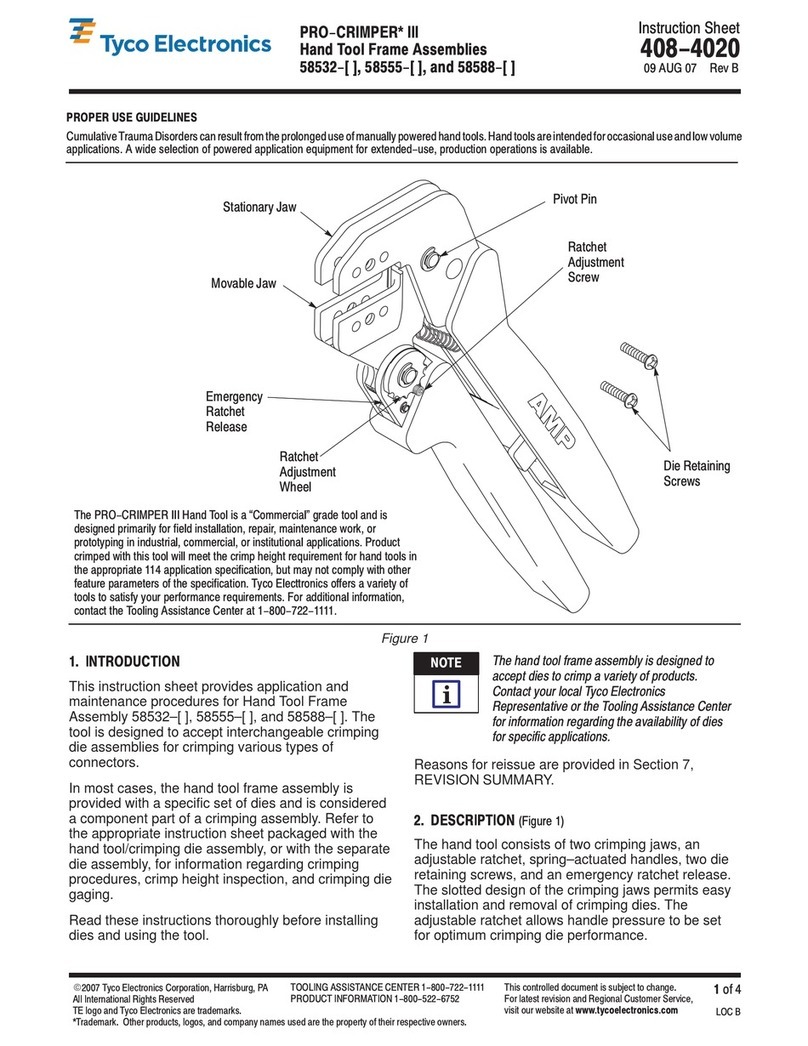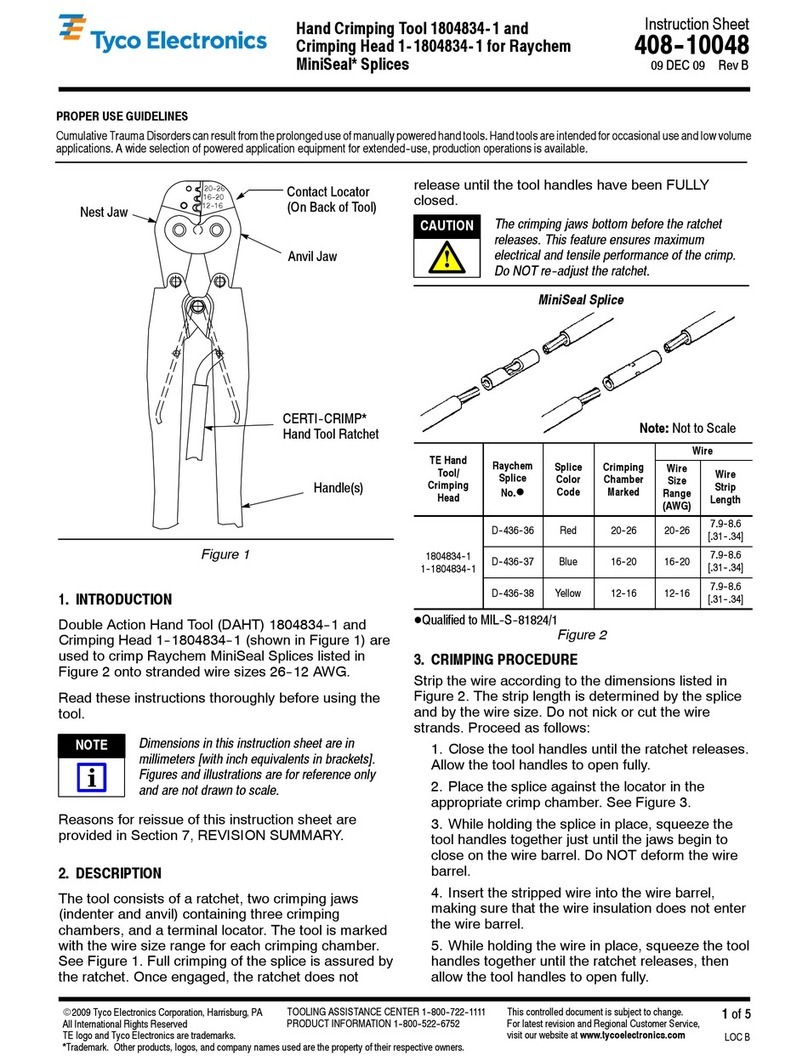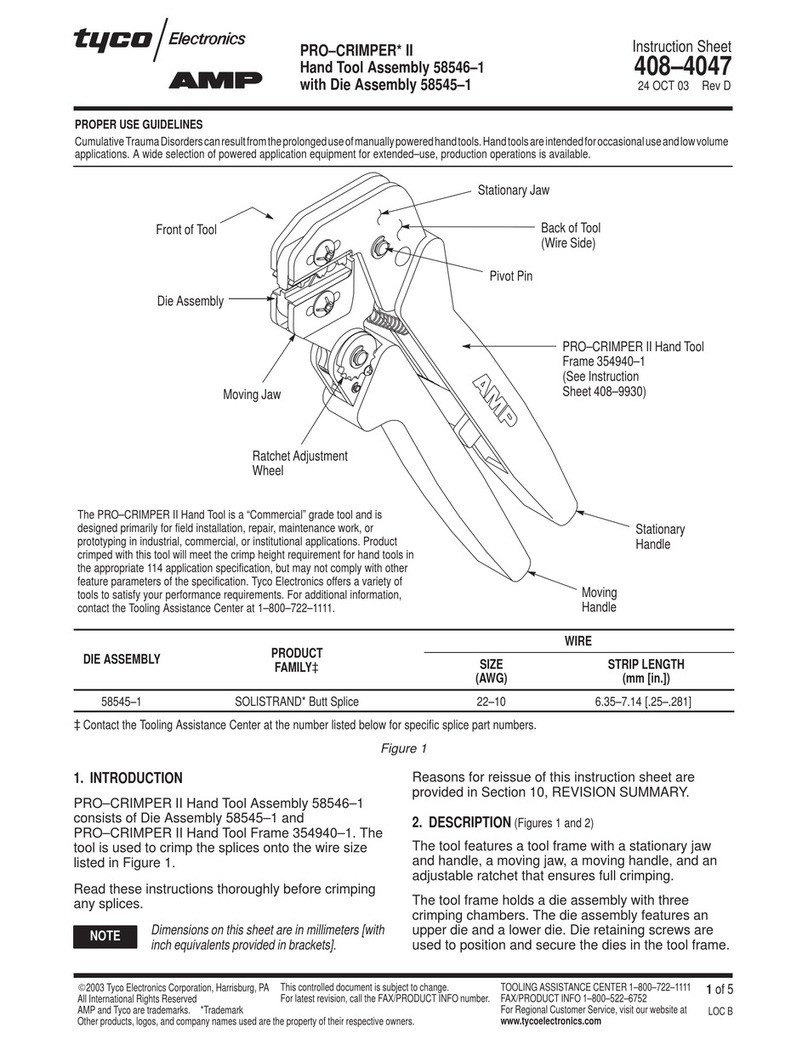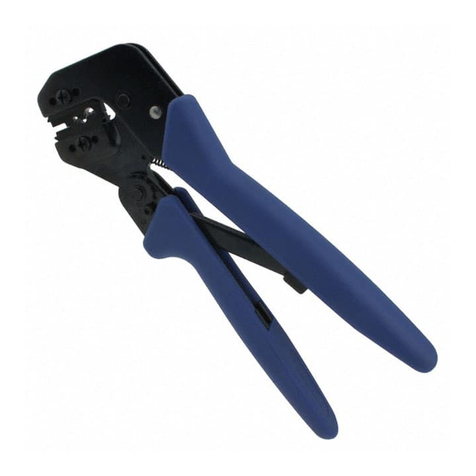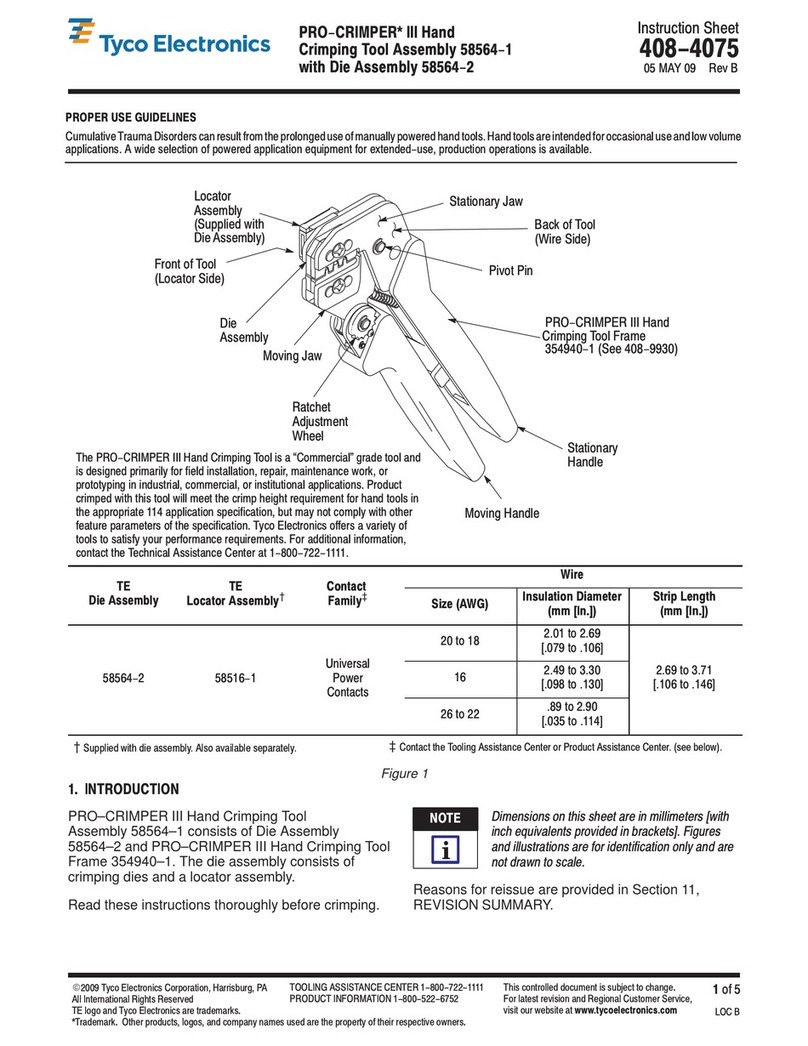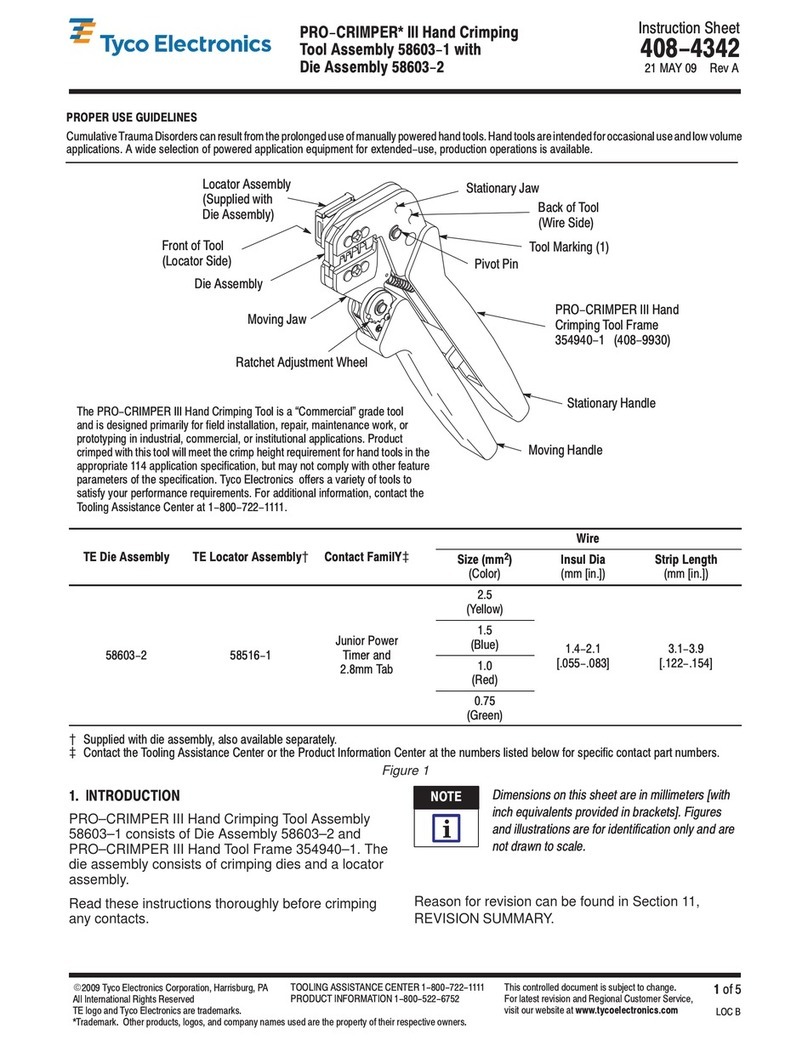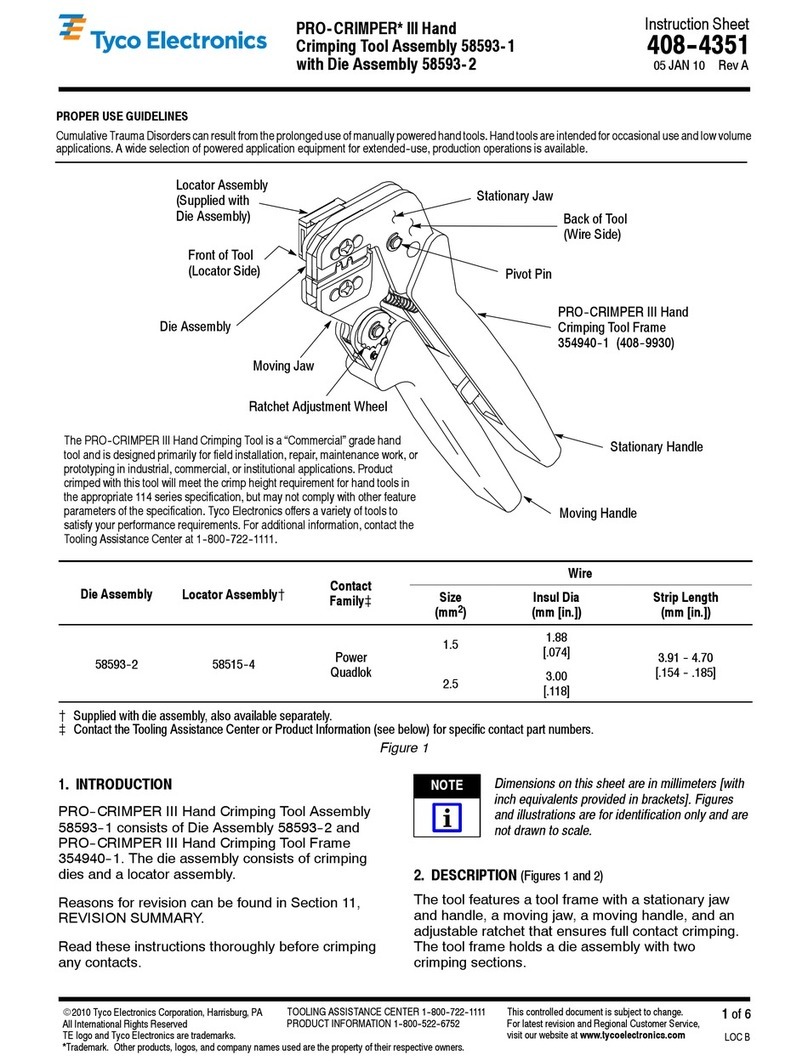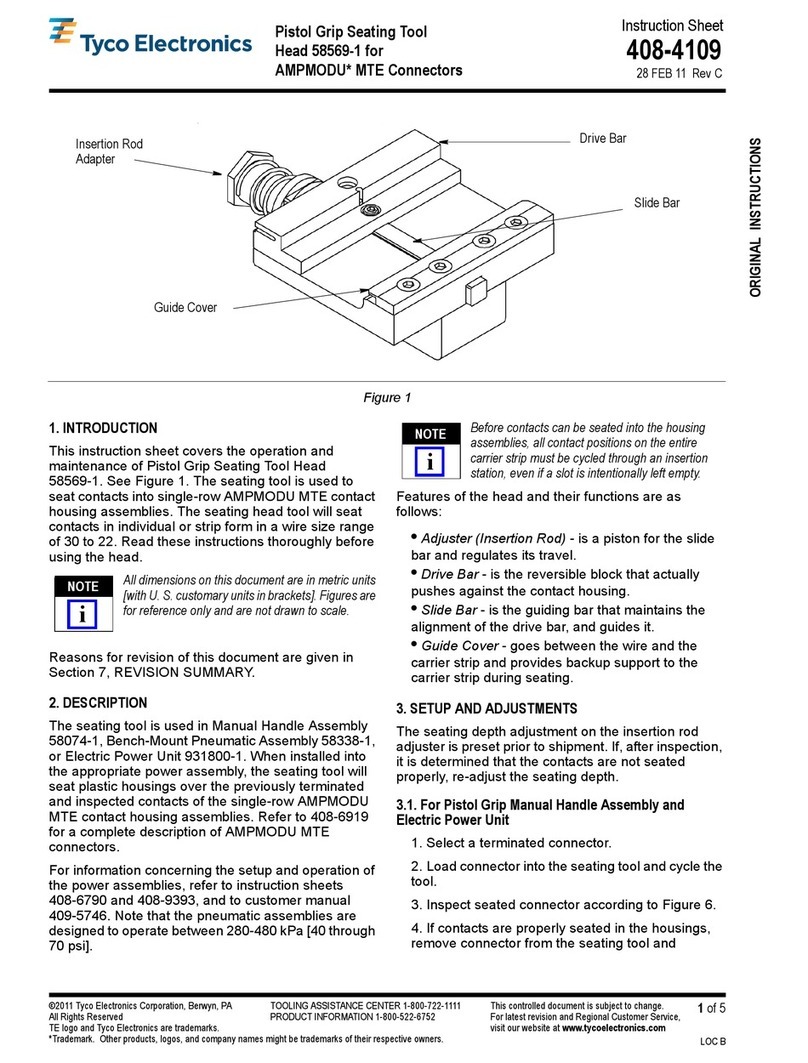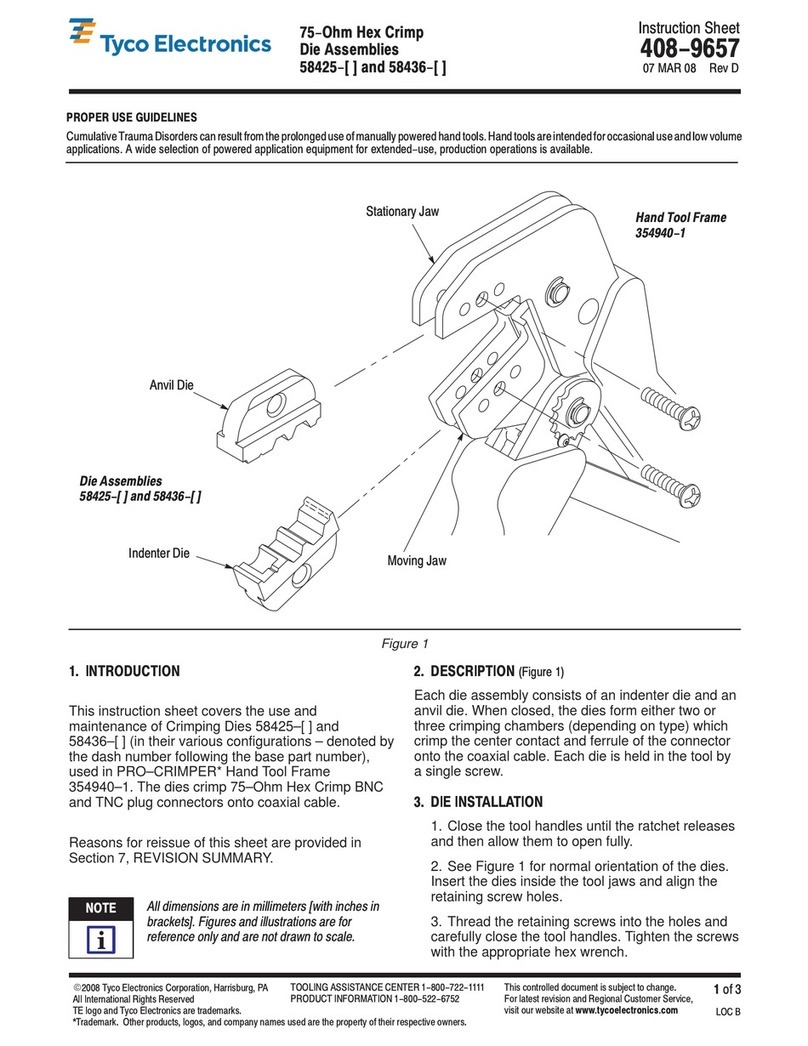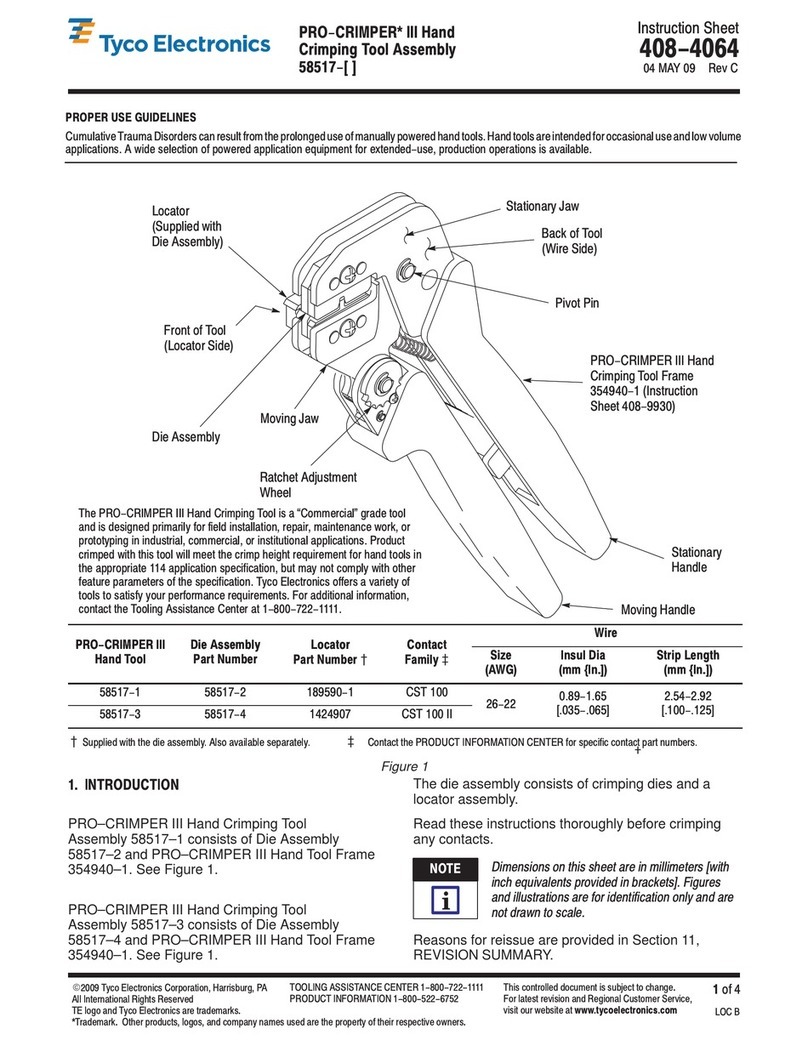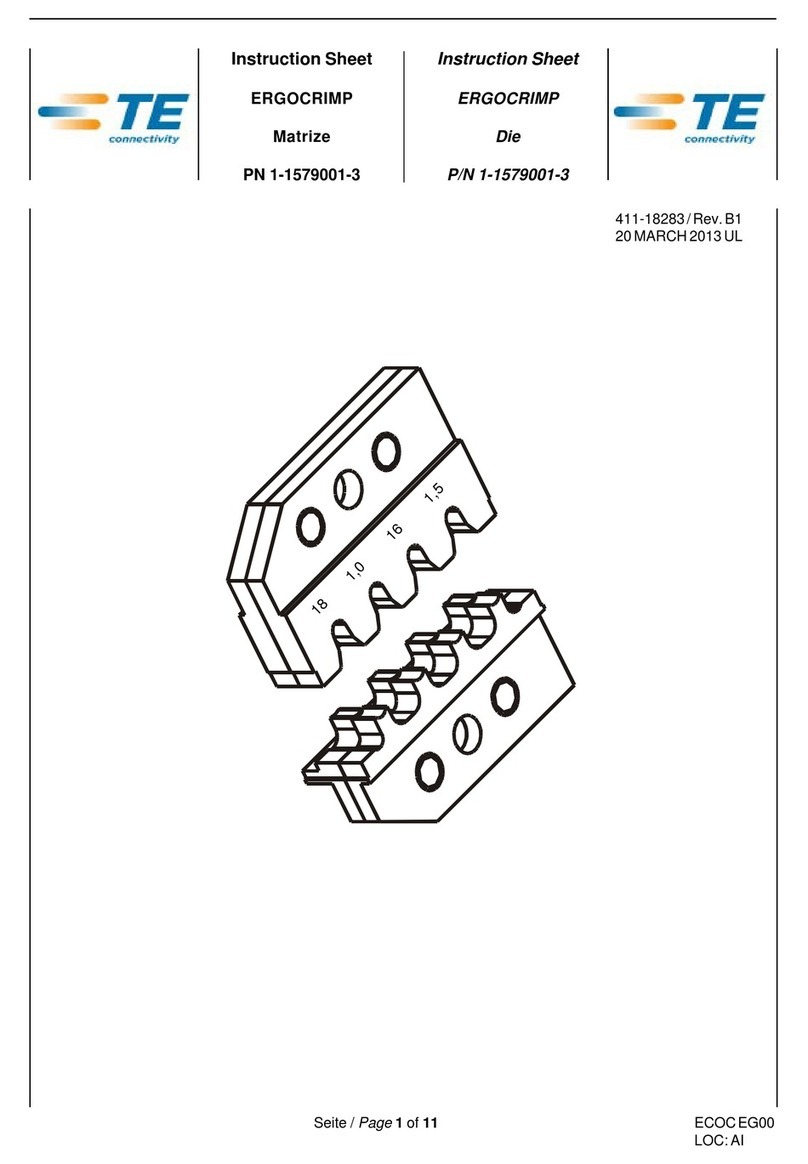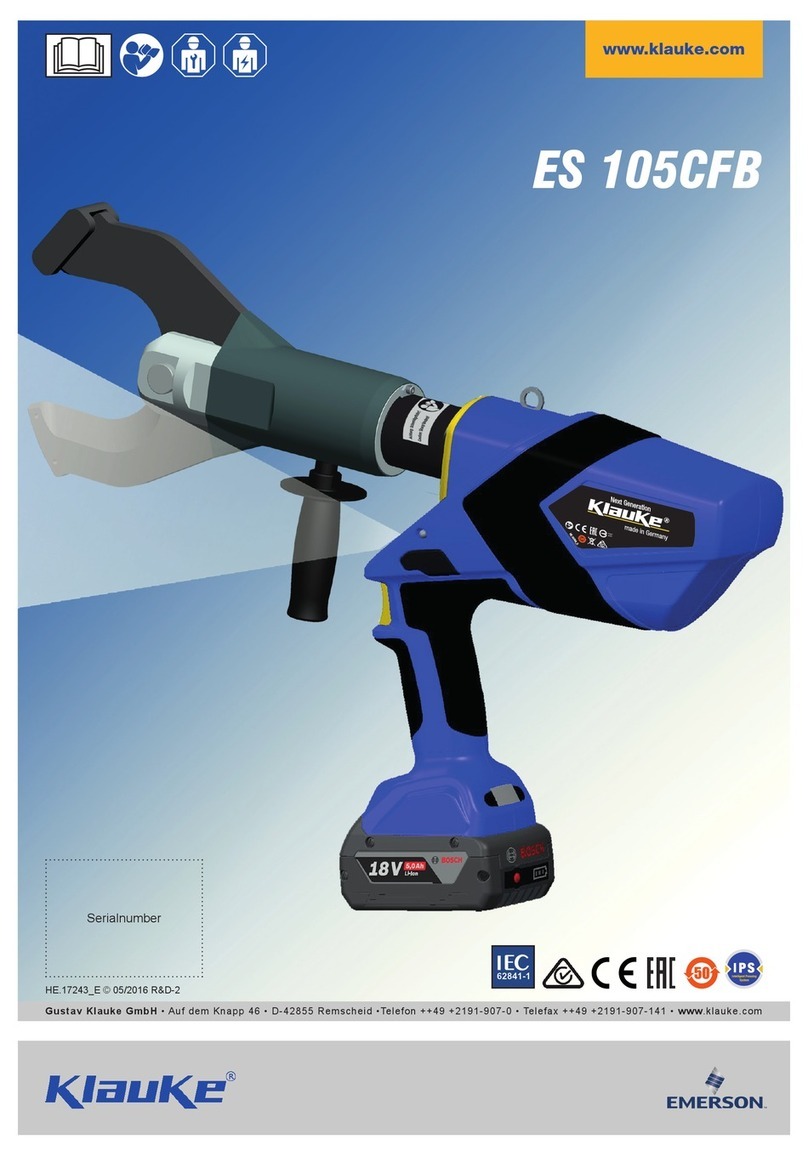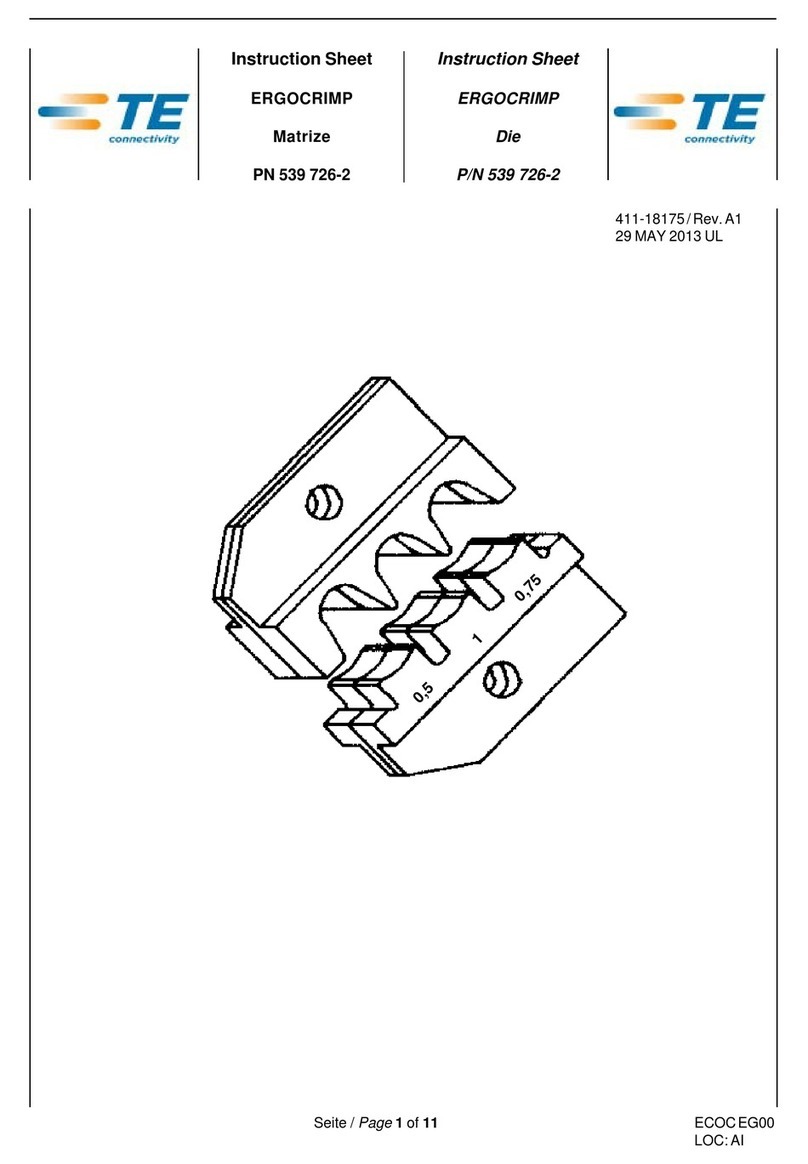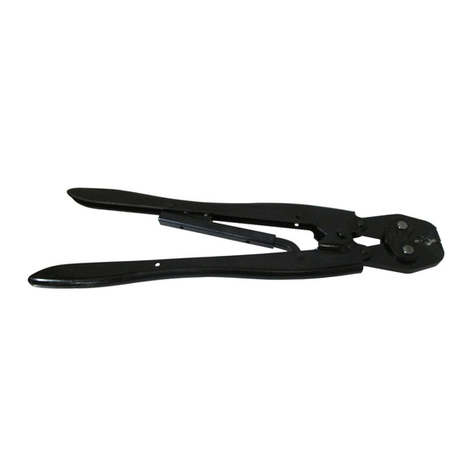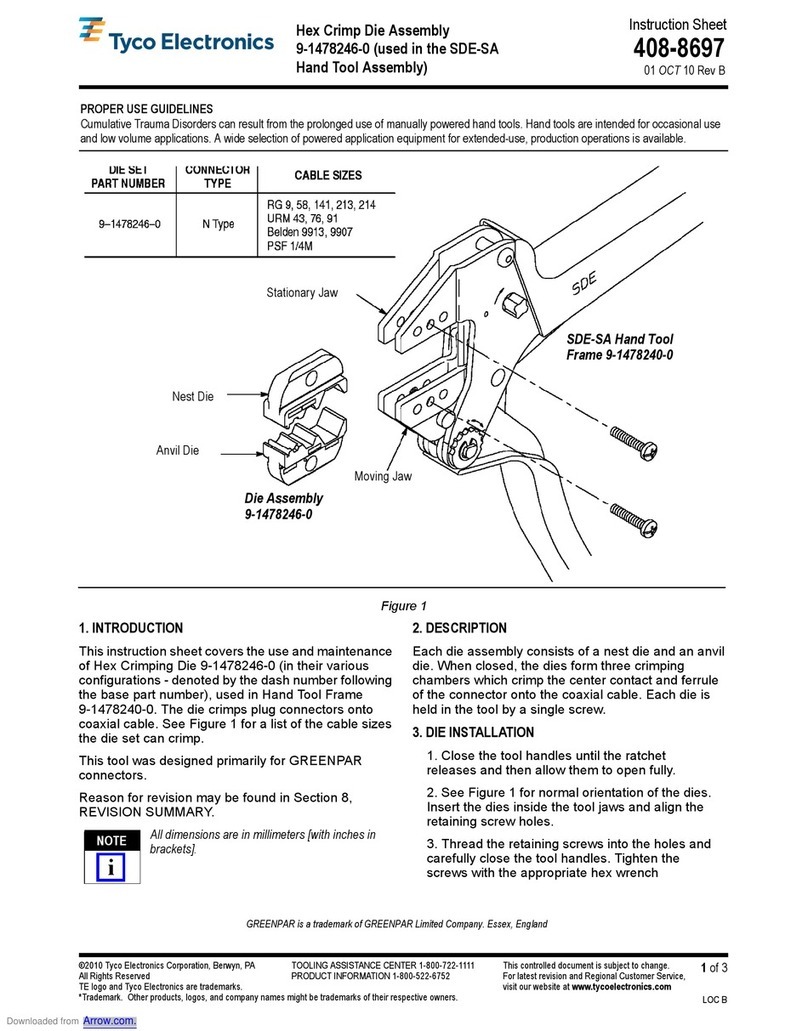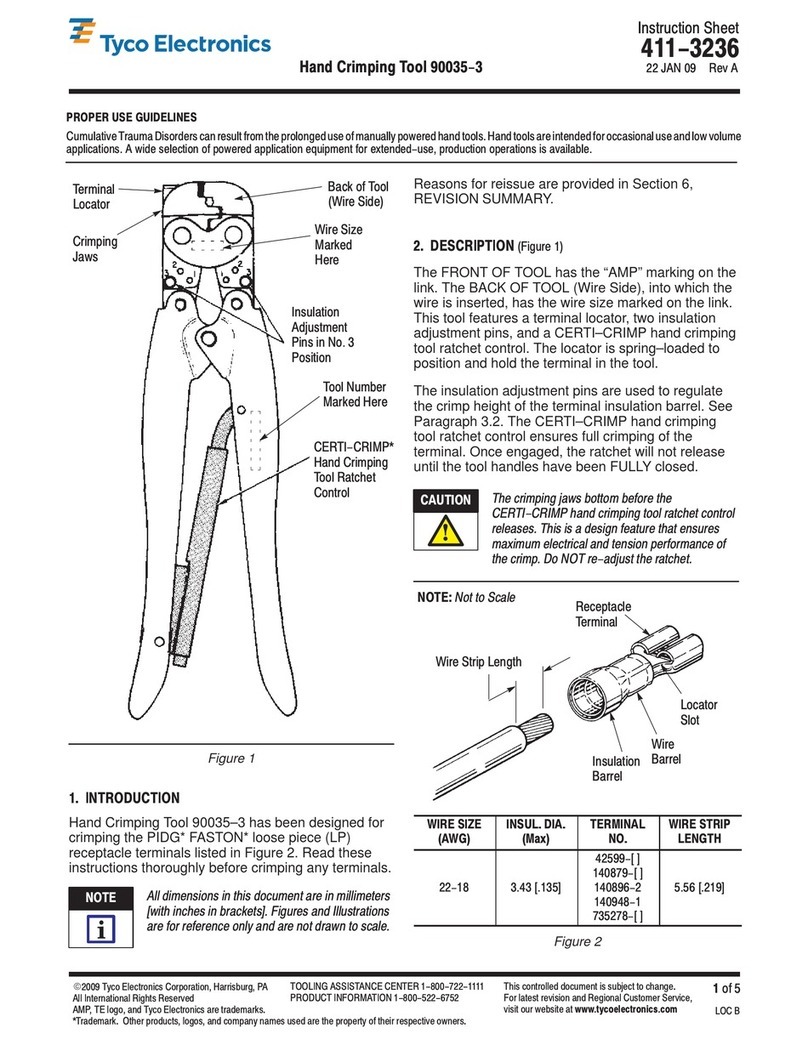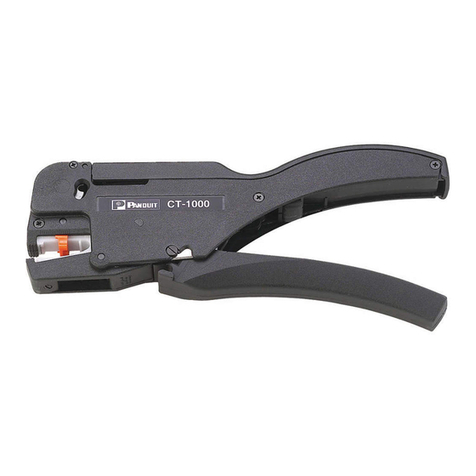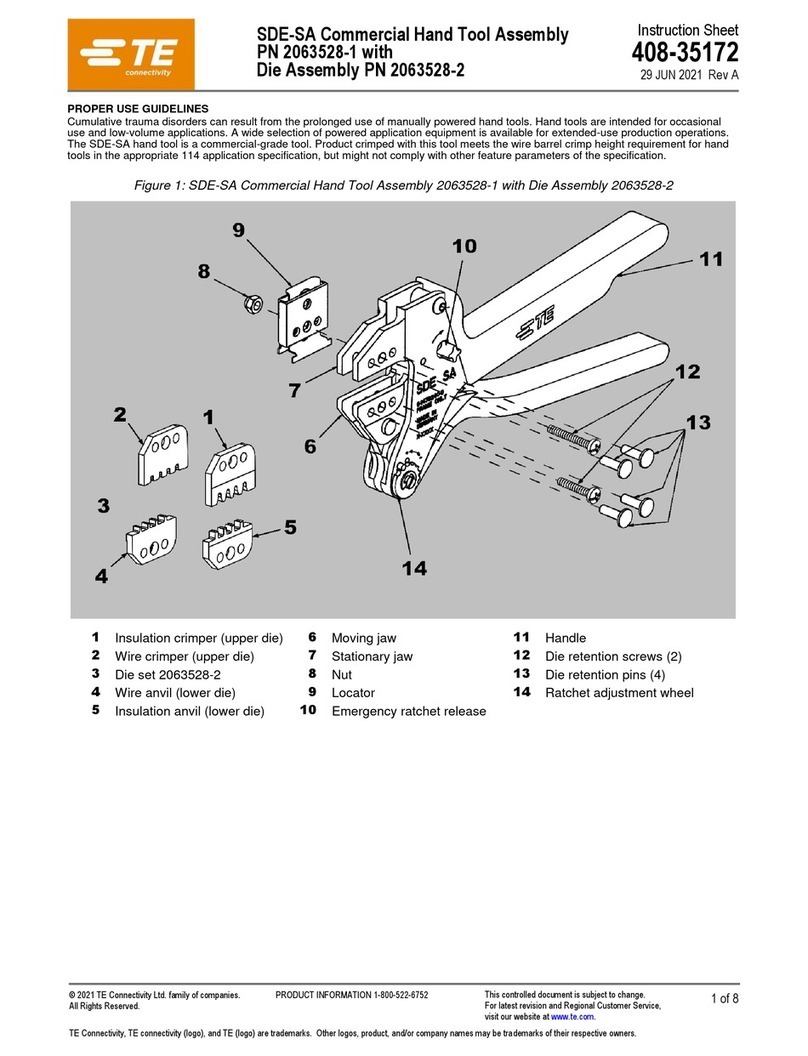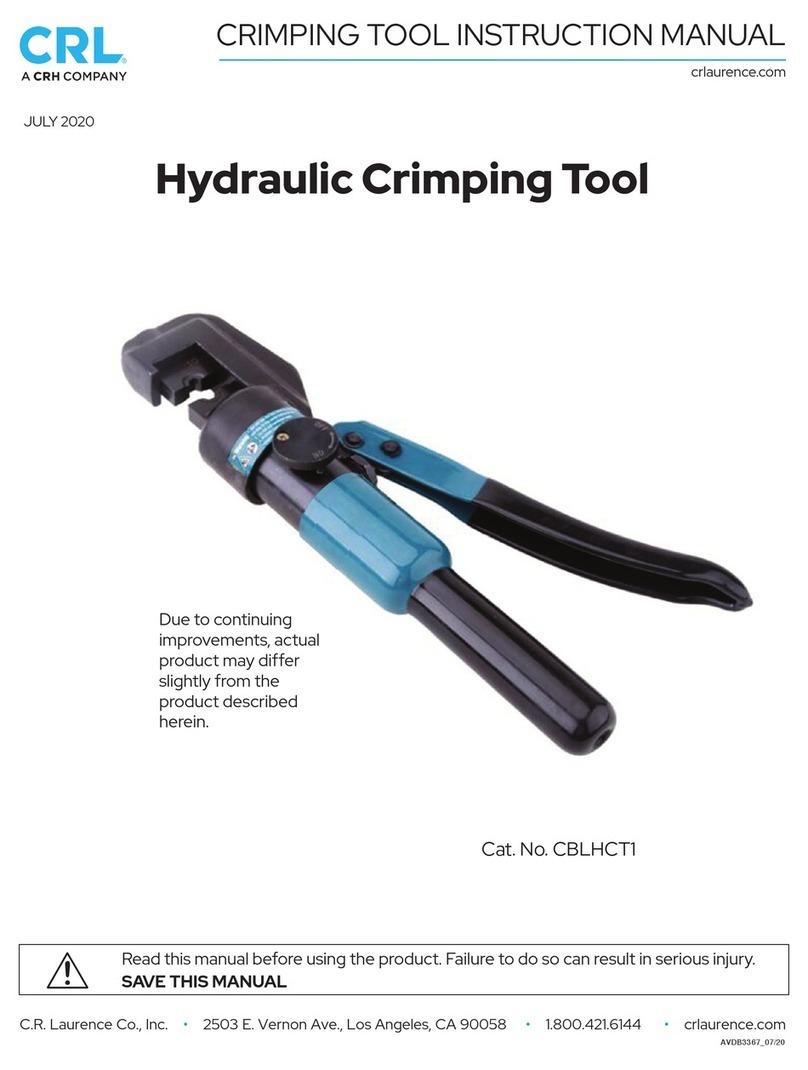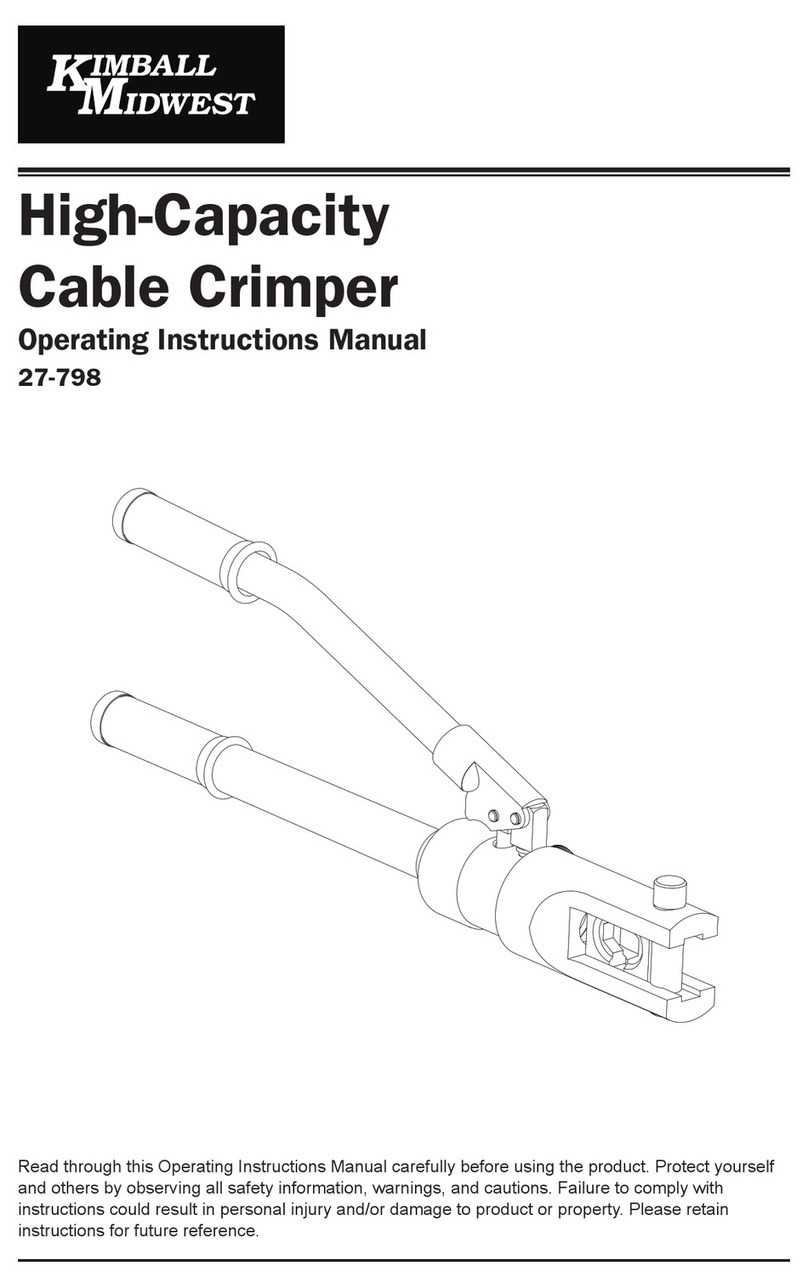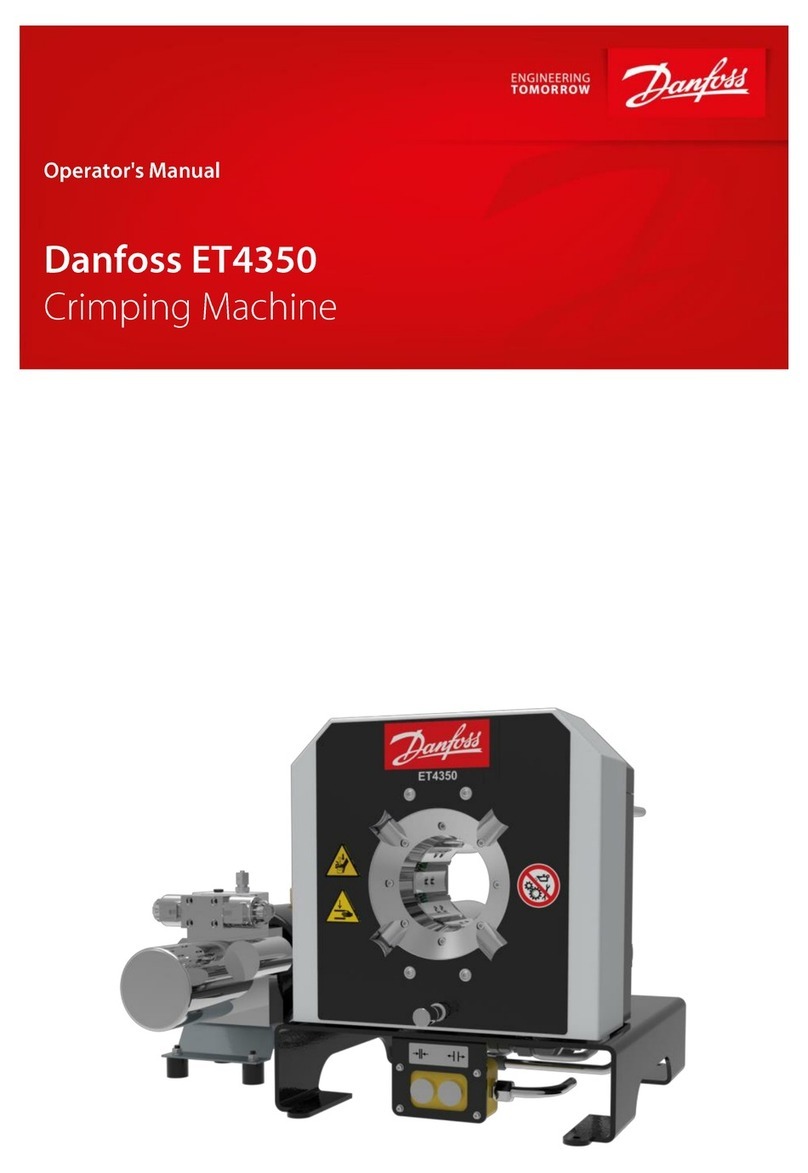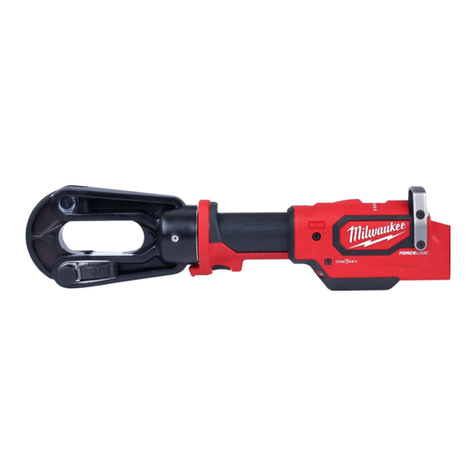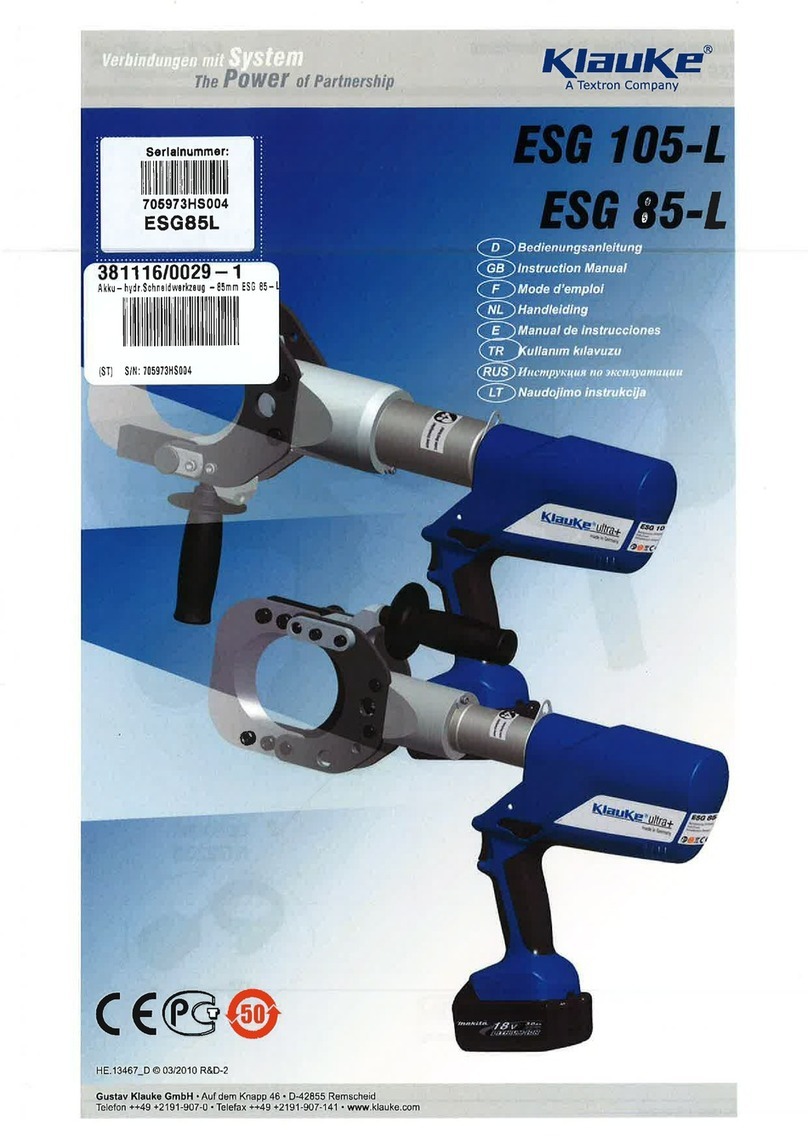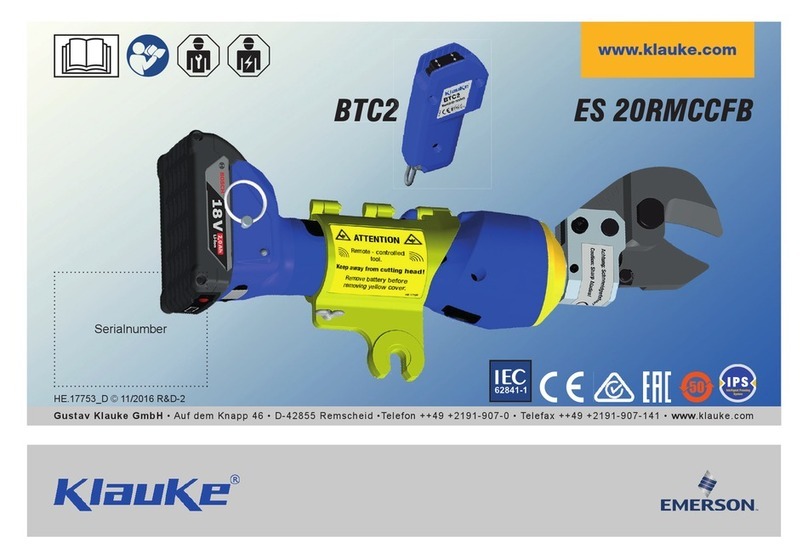
408-10176
CERTI-CRIMP II H ndle Assembly for L rge Dies #16 AWG M x.
Rev
A2
of 3 Tyco Electronics Corporation
3. DIE INSERTION AND REMOVAL
If the crimping dies require an insulation adjustment,
refer to the instruction sheet packaged with dies for
the adjustment procedure, then proceed as follows:
1. Close the handles until the ratchet releases.
Allow the handles to open.
2. Place the stationary die in the stationary die
holder. Turn the die holding screw enough to hold
the die in place. DO NOT tighten the screw.
3. Place the moving die in the moving die holder.
Turn die holding screw enough to hold die in place.
DO NOT tighten the screw.
4. For crimping dies with only one crimping
chamber, align the dies, then tighten the die
holding screws.
5. For crimping dies with more than one crimping
chamber, proceed with the following:
a. Position the stationary die in the stationary
die holder. Tighten the die holding screw just
enough to hold the die in place. DO NOT tighten
the screw.
b. Position the moving die in the moving die
holder. Tighten the die holding screw just
enough to hold the die in place. DO NOT tighten
the screw.
c. With a terminal in position, insert a properly
stripped wire, then squeeze the handles until the
dies bottom.
d. Tighten both the die holding screws while the
dies are bottomed.
e. Remove the terminal from the dies.
6. To remove the dies, close the tool handles until
the ratchet releases, allow the handles to open,
loosen the die holding screws, and remove the
dies.
4. CRIMPING PROCEDURE
The following crimping procedure is typical for
most crimping dies used in this tool. Always refer
to instruction sheet packaged with the dies for
wire preparation and crimping procedure.
1. Place the terminal or splice in the crimping
chamber of the stationary die according to the
instructions included with the crimping dies.
2. Close the tool handles until the terminal or splice
is held firmly in place.
3. For a terminal, insert a properly stripped wire
into the wire barrel until the wire butts against the
crimping die locator.
For a splice, insert a properly stripped wire into the
wire barrel until the wire butts against the splice
wire stop.
4. Holding the wire in place, squeeze the tool
handles together until the ratchet releases. Allow
the handles to open FULLY, and remove the
crimped terminal or splice.
5. For a splice, re–position the splice according to
the instructions included with the crimping dies.
5. MAINTENANCE AND INSPECTION
It is recommended that a maintenance and inspection
program be performed periodically to ensure
dependable and uniform terminations. Though
recommendations call for at least one inspection a
month, frequency of inspection depends on:
1. The care, amount of use, and handling of the
tool.
2. The presence of abnormal amounts of dust and
dirt.
3. The degree of operator skill.
4. Your own established standards.
The tool is inspected before being shipped; however,
it is recommended that the tool be inspected
immediately upon arrival to ensure that the tool has
not been damaged during shipment.
5.1. D ily M inten nce
1. Immersed the tool (handles partially closed) in a
reliable commercial degreasing compound to
remove accumulated dirt, grease, and foreign
matter. When degreasing compound is not
available, the tool may be wiped clean with a soft,
lint–free cloth. DO NOT use hard or abrasive
objects that could damage the tool.
2. Make certain that the retaining pins are in place
and that they are secured with retaining rings.
3. All pins, pivot points, and bearing surfaces
should be protected with a THIN coat of any good
SAE 20 motor oil. DO NOT oil excessively.
4. When the tool is not in use, keep the handles
closed to prevent objects from becoming lodged in
the crimping dies. Store the tool in a clean, dry
area.
5.2. Periodic Inspection
A. Lubric tion
Lubricate all pins, pivot points, and bearing surfaces
with any good SAE 20 motor oil as follows:
Tool used in daily production — daily
Tool used daily (occasional) — weekly
Tool used weekly — monthly
NOTE
i
